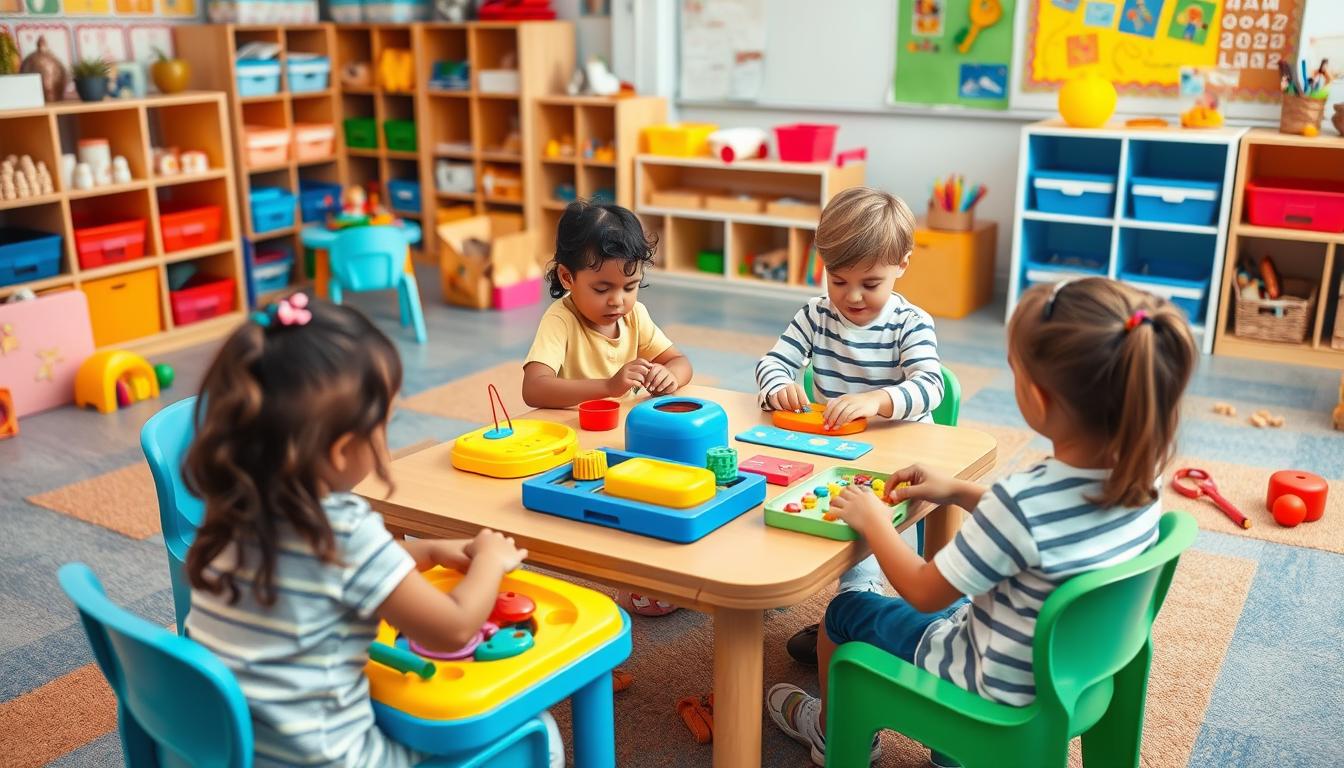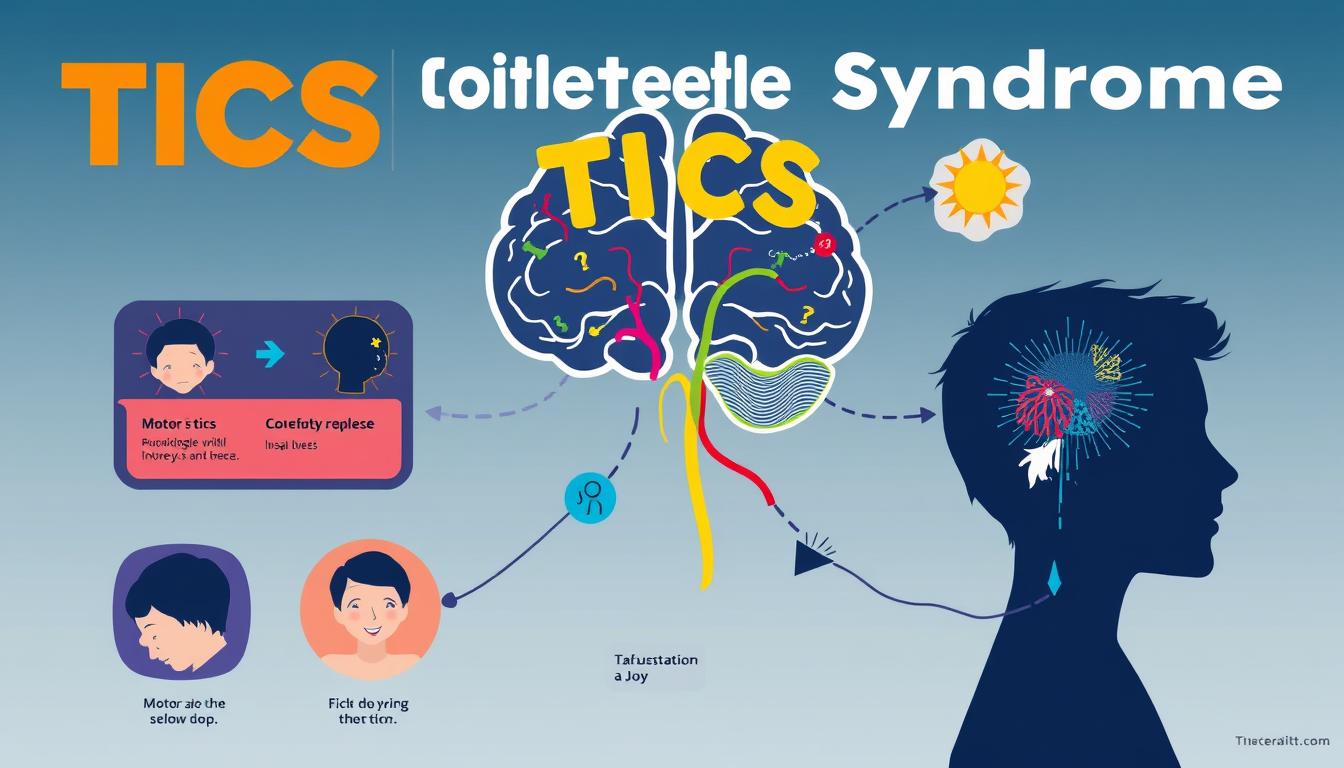Autism spectrum disorders (ASD) have become more common, affecting millions of children and their families in the U.S. As we learn more about this complex condition, it’s vital to offer full support and resources. This support helps these children reach their highest potential. We will look at the basics of ASD, how to create a caring home, and effective ways to help children with autism.
Key Takeaways
- Autism spectrum disorders are a complex, lifelong condition that affects a child’s communication, social interactions, and sensory processing.
- Early identification and intervention are critical to supporting the unique needs of children with ASD and helping them develop essential life skills.
- Fostering a supportive home environment, implementing effective educational strategies, and exploring therapeutic approaches can significantly improve the quality of life for children with ASD and their families.
- Understanding the diverse range of ASD characteristics and providing tailored support is key to empowering children with autism to thrive.
- Advocacy, community resources, and a holistic, compassionate approach are crucial in supporting children with autism spectrum disorders.
Understanding the Fundamentals of Autism Spectrum Disorders
Autism spectrum disorders (ASD) are a group of conditions that affect how people communicate and interact. They also impact behavior. Knowing about ASD is key to helping those who face these challenges.
Early Signs and Indicators of ASD
Spotting early signs of ASD is vital for early help. Look out for delayed speech, little eye contact, and repetitive actions. Also, watch for trouble with social cues and interactions. If you notice these signs, get a professional to check.
The Spectrum of Autism Characteristics
ASD covers a wide range of traits and challenges. People with ASD might be very sensitive to sounds or lights. They might also have strong memories or attention to detail. Each person with ASD is different, making the spectrum very diverse.
Common Challenges and Strengths
Those with ASD often face challenges like anxiety and trouble with socializing. But, they also have unique strengths. Many have great attention to detail and strong analytical skills. Knowing these strengths and challenges helps tailor support for each person.
“The key to understanding autism is to remember that every autistic person is different. There is no one-size-fits-all approach.”
Learning more about autism helps us create a more welcoming place for those on the spectrum and their families.
Creating a Supportive Home Environment for Your Autistic Child
As a parent or caregiver of an autistic child, making your home a nurturing space is key. Understanding your child’s unique needs helps you tailor your home and routines. This creates a sense of comfort, security, and belonging for them.
Setting up a predictable and structured daily routine is vital. Autistic children love knowing what’s coming next. Use visual schedules, timers, and aids to help them smoothly move between activities.
Adding sensory-friendly touches to your home can greatly improve your child’s comfort. Adjust the lighting, cut down on background noise, and create a calm space. This space is where your child can go when feeling overwhelmed.
- Use soft, muted colors and textures to make the atmosphere calm.
- Add calming items like weighted blankets, fidget toys, or textured surfaces.
- Keep the environment tidy to reduce distractions.
It’s also important to foster positive interactions and communication. Teach and use visual aids, gestures, or alternative methods to communicate. Engage your child in activities they enjoy, boosting their confidence and sense of accomplishment.
| Strategies for Supporting Autistic Children at Home | Benefits |
|---|---|
| Establish predictable routines and schedules | Provides a sense of security and reduces anxiety |
| Implement sensory-friendly modifications | Enhances comfort and minimizes overstimulation |
| Encourage positive communication and interactions | Fosters emotional connection and social development |
Creating a supportive home environment is crucial for your autistic child’s well-being. It helps them thrive, build confidence, and feel safe. Remember, every child is unique, so be ready to adjust your approach as needed.

“The home environment can have a profound impact on an autistic child’s well-being and growth. With patience, empathy, and a willingness to adapt, parents can create a truly nurturing space that empowers their child to reach their full potential.”
Autism Spectrum Disorders: Understanding and Supporting an Autistic Child
Supporting a child with autism spectrum disorder (ASD) is a journey of growth. It’s about understanding and embracing their unique needs. This journey helps autistic children develop and thrive. We’ll explore three key areas: communication, social skills, and managing sensory sensitivities.
Building Communication Bridges
Communication is key for all, but it’s a big challenge for many autistic kids. Using visual aids, sign language, or tech can help. These tools empower your child to share their thoughts and feelings.
With patience and empathy, you can build a strong bond. This bond helps in understanding their unique way of communicating.
Developing Social Skills
For autistic kids, social interactions can be tough. Teaching social cues and role-playing can help. These strategies aid in building relationships and engaging with peers.
Remember, social skills are learned. With the right support, autistic children can become confident in social situations.
Managing Sensory Sensitivities
Many autistic kids are very sensitive to their surroundings. Identifying what triggers their sensitivity is crucial. Creating a calm, sensory-friendly space helps them manage their emotions.
Activities like deep pressure therapy or using noise-canceling headphones are great. They support your child’s well-being and help them cope.
Supporting an autistic child is a journey of understanding and patience. By focusing on their unique needs and strengths, you empower them to thrive. This is true at home and in the community.

Educational Strategies and Resources for Children with ASD
Children with autism spectrum disorders (ASD) need the right educational support to grow. Luckily, many strategies and resources are available to help them succeed in school.
Specialized educational programs are a key approach. These programs use visual aids and structured schedules. They also create individual learning plans for each student. Schools also offer autism support services, like one-on-one aides, to give extra help.
There are many educational resources for autistic children too. These include assistive technologies and educational materials made for ASD students. These tools help create a learning space that meets each child’s needs.
Good autism education comes from teamwork. Schools, families, and healthcare professionals must work together. This way, they can understand each child’s needs and support them well.
Specialized Educational Programs for ASD
- Applied Behavior Analysis (ABA) therapy-based programs
- Structured teaching methods (e.g., TEACCH)
- Sensory integration programs
- Social skills development curricula
Educational Resources for Autistic Children
- Assistive technologies (e.g., communication apps, sensory tools)
- Specialized educational materials and curricula
- Autism-focused online learning platforms
- Tutoring and supplementary instruction services
| Educational Strategy | Key Benefits |
|---|---|
| Structured Teaching Methods | Provide a predictable, organized learning environment that reduces anxiety and supports skill development |
| Social Skills Development | Helps autistic children build essential interpersonal skills and navigate social situations more effectively |
| Assistive Technologies | Enhance communication, sensory processing, and independent learning for students with ASD |
By using these autism resources and strategies, schools and families can help children with ASD succeed. This way, they can reach their full potential.
“With the right support and accommodations, children with autism can thrive in educational settings and achieve academic success.” – Dr. Jane Doe, Autism Education Specialist
Therapeutic Approaches and Interventions
Finding the right autism therapies can feel overwhelming. But knowing the different options can help you make better choices for your child. This section covers various therapies, from behavioral to speech and occupational, designed to meet the unique needs of children with autism.
Behavioral Therapy Options
Applied Behavior Analysis (ABA) is a well-studied method that boosts social, communication, and daily living skills. ABA therapists use positive reinforcement to teach new skills and change bad ones. Other therapies like Pivotal Response Treatment and Discrete Trial Training also help with specific challenges faced by autistic kids.
Speech and Occupational Therapy
Children with ASD often struggle with communication and sensory issues. Speech therapy helps improve talking and listening skills. Occupational therapy focuses on sensory integration, fine motor skills, and daily living tasks. Together, these therapies help autistic kids interact better and live more fulfilling lives.
Alternative Treatment Methods
Some families try alternative treatments for their autistic children. This can include special diets, animal therapy, music therapy, or other holistic methods. While the science behind these options is not as strong, some families see them as helpful additions. Always talk to doctors before trying new treatments to make sure they’re safe and right for your child.



